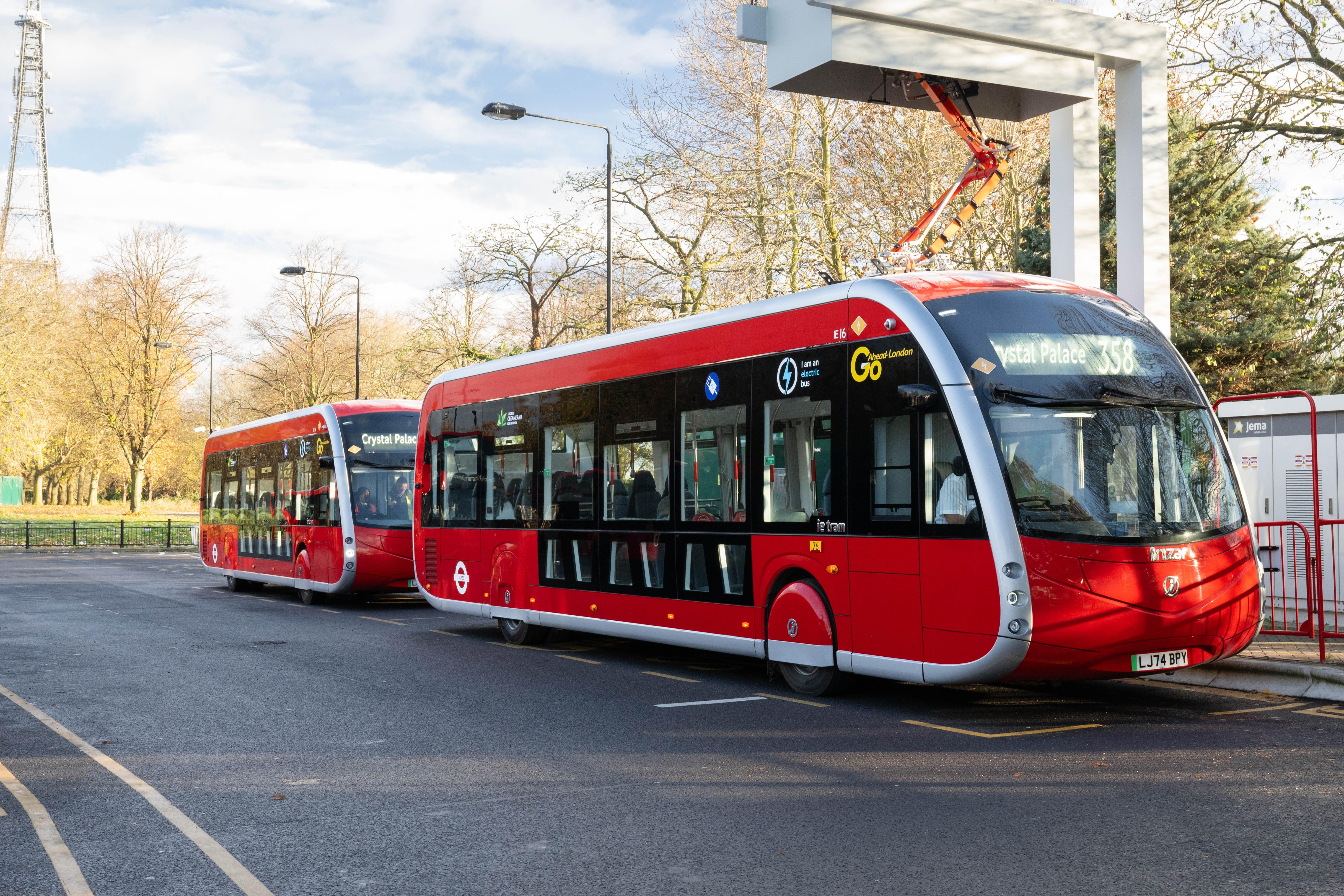London’s new tram-like electric buses have been rolled out
Spanish company Irizar has supplied 20 of the buses and the two pantograph chargers

Your support helps us to tell the story
From reproductive rights to climate change to Big Tech, The Independent is on the ground when the story is developing. Whether it's investigating the financials of Elon Musk's pro-Trump PAC or producing our latest documentary, 'The A Word', which shines a light on the American women fighting for reproductive rights, we know how important it is to parse out the facts from the messaging.
At such a critical moment in US history, we need reporters on the ground. Your donation allows us to keep sending journalists to speak to both sides of the story.
The Independent is trusted by Americans across the entire political spectrum. And unlike many other quality news outlets, we choose not to lock Americans out of our reporting and analysis with paywalls. We believe quality journalism should be available to everyone, paid for by those who can afford it.
Your support makes all the difference.New electric buses charged by pantographs have been rolled out on one of London’s longest bus routes.
The fleet of 20 buses are being recharged at each end of the 15-mile route 358 between Crystal Palace and Orpington in the south-east of the capital.
The pantographs are arm-like structures which attach to a bus roof and provide high-powered charging in as little as six minutes.
That means the vehicles do not need to return to garages to recharge, reducing the fleet size required to serve the route.
The buses have a striking design with similar characteristics to a tram.
Transport for London (TfL) said they also have a “safer” front and features such as speed limits, audible warnings to alert pedestrians and other road users to the movements of the bus, and cameras and monitors instead of mirrors for the driver.
Spanish company Irizar has supplied 20 of the buses and the two pantograph chargers.
Pantograph technology was first introduced to London’s bus network in 2022 with testing at Bexleyheath garage.
More than 1,700 zero-emission buses are now in service in London.
Lorna Murphy, director of buses at TfL, said: “Installing new rapid-charging pantograph infrastructure on one of London’s longest bus routes is an innovative step forward, helping us to run cleaner, greener services that get Londoners where they need to be.
“Working with partners across a range of different sectors on this project, we are showcasing how the broader shift to net zero can be achieved.
“The move to increase the number of zero-emission buses on the capital’s streets is a key part of the Mayor’s goal to make London a zero-carbon city.”
Tom Joyner, managing director of Go-Ahead London which operates the buses, said: “I am incredibly proud of the strides we’ve made this year in our journey toward a zero-emission future.
“Go-Ahead London is leading the way in driving the transition to zero-emission buses, with 636 electric vehicles now operating across our network.”